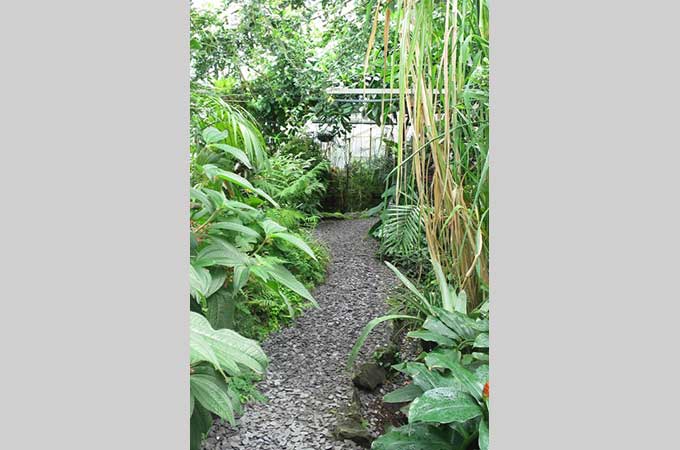Tropical Glasshouse
At 18–35 degrees, the Tropical Glasshouse replicates the year- round warm and moist ‘rainforest’ conditions of the Earth’s tropical regions for plants ranging from South and Central America, Africa, Asia and northern parts of Australia.
The tropical glasshouse allows students, staff and the general public to learn and appreciate the huge diversity of plant life in the tropics.
The extreme competition for resources, especially light, results in a unique vegetation structure in the rainforests: a high dense canopy with a dark forest floor. This allows sun loving climbers such as the Birthwort Aristolochia gigantea and Dutchman’s Pipe (Aristolochia ringens) to provide shelter for many epiphytic bromeliads, orchids, ferns, carnivorous plants and spreading evergreens that are also popularly grown as house plants such as Fittonia and Tradescantia.
The glasshouse also provides great examples of tropical Ficus (Fig) species, including Ficus aurea, F.pumila and F.religioisa. Ficus is a pan-tropical genus of trees, shrubs and vines that are characterised by their tasty fruit which displays a distinctive pollination syndrome, utilising a wasp for pollination. Many Ficus also share a common ‘stranging’ growth habit, where the roots of seedlings grow down to the forest floor taking nutrients from the soil. Gradually the roots wrap around the host tree, widen, and slowly form a lattice-work that surrounds the host’s trunk and kills it. This often leaves the fig a distinctive ‘columnar tree’ with a hollow centre.
The Tropical Glasshouse also displays many economic crops including the famous Cavendish banana, sugar cane, black pepper, papaya, coffee, mahogany and everyone’s favourite, cocoa.
The glasshouse is kept humid by automatic misters and hand watering. On hot days the temperature can reach up to 40degrees and the air become completely saturated with water.





